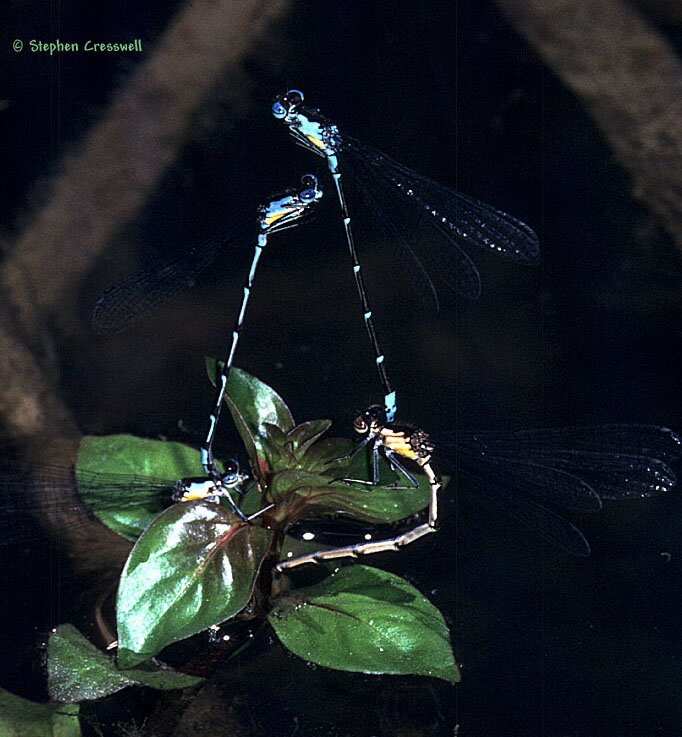

Family: Coenagrionidae
Length: 32-29 mm
Although at first glance this damsel looks like one of the Bluets (genus Enallagma), unlike the Bluets it lacks eyespots and shoulder stripes. Another key identification trait is that both sexes have yellow on the sides of the thorax.
Aurora Damsels may be found in bogs, along small streams, and at ponds. They are primarily an early season species, most active from mid-May to late July. Look for them perched on low vegetation or on the ground, typically with their wings partly spread.
Males and females are similar, but the males are blue on segements 8 and 9 of the abdomen, while on the females those segments are brown and black. Females sometimes lack the blue coloration on the thorax; in the photo, one female lacks the blue on the thorax while the other female has it.
Bick, Bick, and Hornuff (1975) studies the behavior of Chromagrion conditum at a pond at Highlands, North Carolina. They reported that courtship and display "did not occur"; males simply seized females from the females perches. The pairs spent an average of 36 minutes mating in the wheel position, then some 67 minutes in tandem, ovipositing and investigating oviposition sites. During oviposition the males were nearly vertical; the females at most were partially submerged. The researchers estimatated about 200 eggs laid during the oviposition, with hatching coming after about 21 days.
At the North Carolina study site the other common damsel species was Enallagma hageni. Though E. hageni is smaller than Chromagrion conditum, the latter treated the former with deference, often turning away when an E. hageni was encountered. Indeed, Bick, Bick, and Hornuff found no evidence that male Chromagrion conditum are territorial. Instead of maintaining a territory, the males spend a great deal of time in flight, and in this way occasionally spot a potential mate perched on vegegation.
As of 2006 the West Virginia counties reporting Chromagrion conditum were Clay, Greenbrier, Hampshire, Hardy, Pocahontas, Preston, Randolph, Raleigh, Summers, Taylor, Tucker, and Upshur, but it undoubtedly lives in other locations around the Mountain State.


